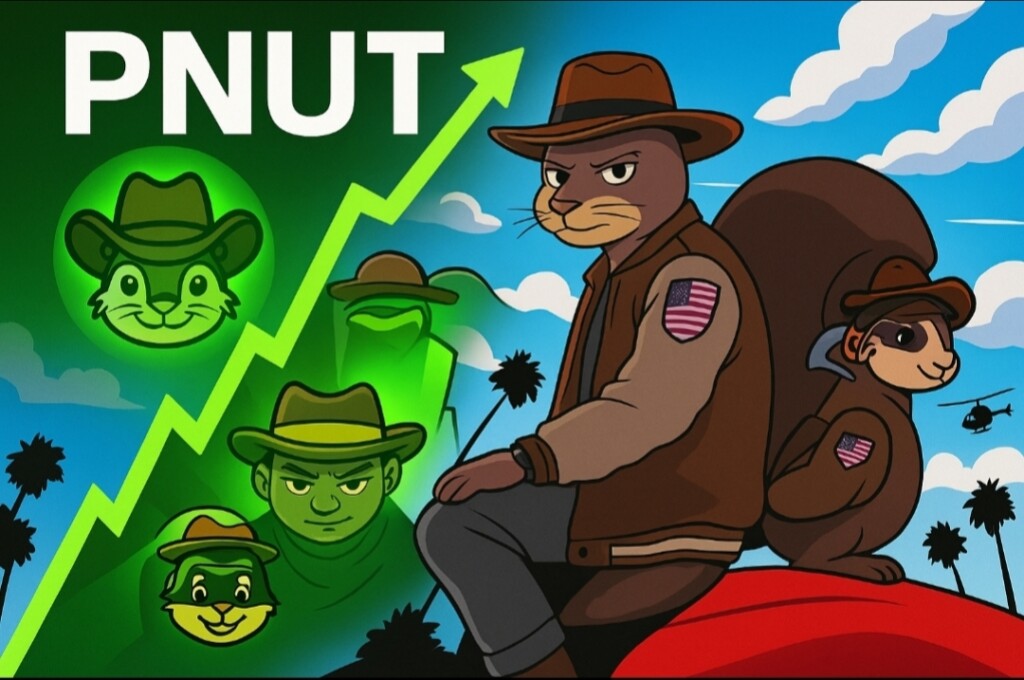$PNUT, a well-liked token in the Solana system, has recently been under the spotlight for having a very concentrated distribution of tokens.
Data that has come to light shows that a staggering amount of $PNUT’s supply is controlled by a tiny number of large holders (or “whales”), with the vast majority of retail investors holding a piddling amount of the otherwise circulating supply. This upside-down ownership structure leaves us with some very upside-down questions to answer regarding the token’s market dynamics, liquidity, and whale risk.
Whales Dominate $PNUT Supply, Holding Over 90% of Tokens
The latest analysis of token distribution has revealed a striking element: the $PNUT token is held mostly by just 52 wallets, often referred to as whales. These few holders control a jaw-dropping 90.2% of the total token supply. What this means, then, is that the vast majority of $PNUT tokens are clustered in a small number of accounts—an absolutely absurd situation, even by the unstable standards of crypto tokens.
Big holders, or “whales,” typically have outsized influence over the price and liquidity of a token. With 90% of $PNUT held by these large and mostly secretive investors, the market may face heightened volatility whenever these whales decide to buy or sell. Large sell-offs, or coordinated moves by whales, can and do swing prices and liquidity drastically.
Whale wallets concentrated with tokens make us question just how much power they hold over a decentralized project’s governance model. Indeed, when so few hold the majority of tokens, they can effectively steer the project as they please—voting on governance proposals or exerting influence over key decisions that determine the project’s future.
Retail Investors Hold a Fraction of the Supply
Unlike dominance of whales, retail holders — sometimes dubbed “shrimps” because of their relatively minute token holdings — co-own a mere 3.1% of the $PNUT supply. This small share is spread across more than 16,800 wallets. Although this number suggests a large base of retail investors, these individuals hold very few tokens.
The difference between whale and retail ownership is stark. The ratio of whales to shrimps is a stunning 29.16x, meaning whales hold nearly 29 times more tokens than all retail holders combined. This situation could spell trouble for average investors, who may lack the market power to make waves in token trends or decisions.
$PNUT @pnutsolana Token Distribution
Peanut the Squirrel ($PNUT) is showing extreme whale concentration:
90.2% of supply held by just 52 wallets (Whales)
Only 3.1% held by 16,805 retail holders (Shrimps)
Whale/Shrimp Ratio: 29.16x — whales own 29x more than all shrimps… pic.twitter.com/UZFYg9dg9z
— Stalkchain (@StalkHQ) May 28, 2025
This distribution structure has potential risks for retail investors. Because whales hold the vast majority of the tokens, they could (and have) used their large quantities of tokens to either sell off in a coordinated fashion (e.g., all at once, or over a short time frame) or to engage in market manipulation to create the illusion of supply and demand (e.g., at a very low price). The end result is a sharp drop in price that endangers the vulnerable, non-whale retail investor and usually (but not always) creates a situation in which the retail investor ends up suffering losses.
Binance Holds 40% of $PNUT Supply, Further Concentrating Control
Another layer is added to the token distribution dynamic when we consider that Binance, one of the world’s largest cryptocurrency exchanges, holds around 40% of the total $PNUT supply. This substantial allocation suggests that almost half of the entire token pool is concentrated within a single exchange.
Binance’s big bag of $PNUT is likely to have come from allocation to “liquidity, trading, and operational reserves”—not exactly sources of tokens that are likely to contribute to a healthy ecosystem. Yet, with such a monstrous stash, Binance also wields a lot of power over the price and price stability of $PNUT. Trading activity on Binance will, of course, influence the price, but what about when the exchange’s own listing decisions, withdrawal policies, and token management practices come into play?
Additionally, Binance’s large holding contributes to the overall concentration of $PNUT ownership, compounding our concerns about how centralized this market is. Combined with the holdings of the top 52 whale wallets, over 90% of the supply is in just a few hands. That makes this token exceptionally susceptible to large-scale moves by a small number of actors.
Conclusion
The token distribution of Peanut the Squirrel ($PNUT) shows a clear pattern of ownership concentration that could be very meaningful for the token’s market behavior and the confidence of investors. A stunning 90% of the supply is held by just 52 entities, which sounds a little more alarming when you consider that half of those 52 whales are also half of the 90%. Without getting into details, this is essentially a really dangerous setup for a token.
It is critical for retail participants and potential investors to grasp this distribution before interacting with $PNUT. Among the Solana ecosystem’s tokens, $PNUT is becoming one of the most popular; but with how few wallets it resides in, that also makes it dangerously susceptible to price volatility in the event of even a small uptick in selling pressure. Centralization makes $PNUT a precarious investment, and unless future developments around governance, liquidity, and community engagement address that centralization, using it may be (and probably is) riskier than even our first impression of it suggests.
Disclosure: This is not trading or investment advice. Always do your research before buying any cryptocurrency or investing in any services.


No Comments